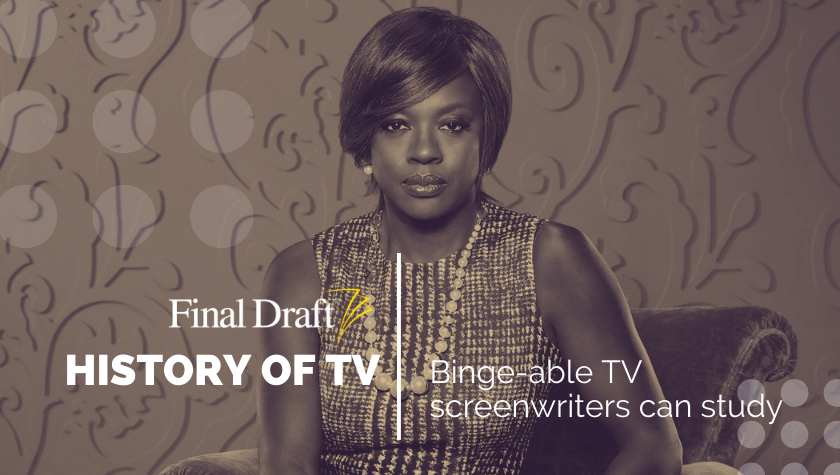History of TV: CW’s Supernatural Soap Opera ‘The Vampire Diaries’
March 18, 2021
No, it’s not a Twilight rip-off. Impossible when L.J. Smith’s original Vampire Diaries series was published more than a decade before we were ever introduced to Bella, Edward and Jacob.
Okay cool, now that we have that out of the way, let’s sink our teeth into what made The Vampire Diaries worth watching for eight seasons — a run that began with the largest pilot episode audience for any show on The CW Network leading up to its 2009 premiere.
There’s something about small towns
“Small towns have long memories and pass their horrors down
ceremonially from generation to generation.” - Stephen King
Well said, Mr. King. It worked well for his highness of horror in, well, nearly every story he ever wrote — and it worked well for The Vampire Diaries. Set in the fictitious small town of Mystic Falls, Virginia, where a long history of supernatural threats has existed, the town was the show’s secondary character. Instrumental in this concept was the Founders’ Council, composed of key townspeople who tried to guard their home from those supernatural threats. It was a clear “us vs. them” paradigm that became oh-so-twisted in TVD fashion the more the “us” became “them,” as one main character after another was turned into a vampire, werewolf, witch, ghost, hybrid, etc. And also as the perceived “good people” of the town went about ensuring their end goals often through very evil means.
While TVD turned small-town appeal on its head by illuminating its downright creepy side, the show also made use of another of its offerings: town events. From the Founders’ Ball to high school events and even the pivotal Mikaelson Ball in season three, these events provided a way to get all the characters physically together and then weave their storylines as they twirled around the dance floor.
Structuring the flashback
Aside from twists so sharp they’ll snap your neck, The Vampire Diaries consistently utilized flashbacks to integrate character history with the town’s history (and everything in between) to inform current plotlines. As a screenwriter, knowing when to use flashbacks can be more important than what you’re showing. It’s a reveal to the audience of sorts, informing their perception of current events by letting them in on characters’ deep, dark, sordid pasts. We get a glimpse of the moment they were emotionally (sometimes physically) wounded, and how that propels their motivations.
The third season finale is worth studying for how it layers in flashbacks with current events for maximum emotional backlash. While Elena (Nina Dobrev) recovers, she pines for a time before the Salvatore brothers complicated her life, only further underscored by the incessant scheming of her entire friend group. Then, in a perfectly placed flashback we see her current choices are based on false memory, making the heartbreak all the more consuming.
And speaking of twists, let’s give a nod to episode 7 in the first season, when Vicki Donovan (Kayla Ewell) was not only one of the first humans turned, but also died. We learned in one dead heartbeat that main characters can and will get killed off in this show. TVD didn’t shy away from graphic death — the number of hearts we watched literally get torn out of people’s chests! — steamy love scenes, and jaw-dropping surprises (but more on Katherine Pierce in a moment).
A hero is only as good as their villain
First, it was vamp Damon Salvatore (Ian Somerhalder) as the bad-boy older brother of Stefan Salvatore (Paul Wesley) who occasionally murdered people. But he had nothing on the nothing-short-of-deranged Klaus Mikaelson (Joseph Morgan). And yet, Klaus was such a fully realized result of the writers taking their time to give the “bad guy” an arc, desire, and many, many flaws, that at times one was made to feel something akin to empathy for this villain. Even more rarely, one could even find oneself rooting for him. Or shipping "Klaroline," if you dare Google it.
Not so for the series' ultimate puppet master; Katherine Pierce (also Nina Dobrev). She was Elena’s doppelgänger and about as devilishly opposite as two girls could get — except for their obsession with the Salvatore brothers. She provided an outlet for Dobrev to spread her acting wings, while also providing plenty of opportunities to character-blend. She kept it nothing short of infuriating; the ultimate love-to-hate-her villain.
In retrospect
Yes, monsters as metaphors isn't anything new, and in the world of The Vampire Diaries, nearly everyone turned into one. Except for poor Matt Donovan (Zach Roerig), perhaps a metaphor of his own for the cool jock in school who never really amounts to anything beyond high school while everyone goes to live wild and weird lives. Except that in Matt’s case, he was kind and fought for his friends and town no matter what. So maybe his character was actually more of a statement about the persevering nature of humanity. That’s the beauty of great television, it starts a conversation. Not everyone will see or appreciate the same parts of it, but it’s a common ground we can engage with together.
Thanks to creators Julie Plec (The Originals, Legacies) and Kevin Williamson (Dawson’s Creek, Scream franchise, and Tell Me a Story), we got 171 episodes of teen angst in all its goriness — both real and metaphorical. We all know high school can be hell, and when that veil came down in season four’s “Graduation” so the Other Side can unleash on friends Elena, Matt, Bonnie (Kat Graham), Caroline (Candice King), and Tyler (Michael Trevino), it’s clear that what’s waiting isn’t pretty; just like in real life as we head into the unknown after the safety of small-town school.
Later seasons evolved as the characters grew up, grew apart, and some were replaced with new favorites. But it all began thanks to the tale-as-old-as-time love triangle between two vampires and the girl next door.
Written by: Karin Maxey
After seeing her first big screen movie 007: License to Kill at age six, Karin naturally became obsessed with writing action-infused stories. The next time she’d see Benicio del Toro was in person, at the 68th Cannes Film Festival—he was there for the Sicario red carpet, she was there for her first produced short film in the basement of the Palais…same-same. In between, Karin earned a Creative Writing Degree and landed management at Echo Lake Entertainment. Her scripts have been a Big Break Top 3 finalist, HollyShorts Film Fest Official Selection, and a multi-Screencraft competitions semi-finalist. Karin is also a screenplay editor who delights in the process of polishing writers' work for submission. You can find her at www.writergirlkarin.com.- Topics:
- Discussing TV & Film




